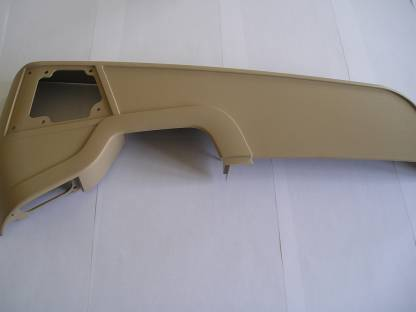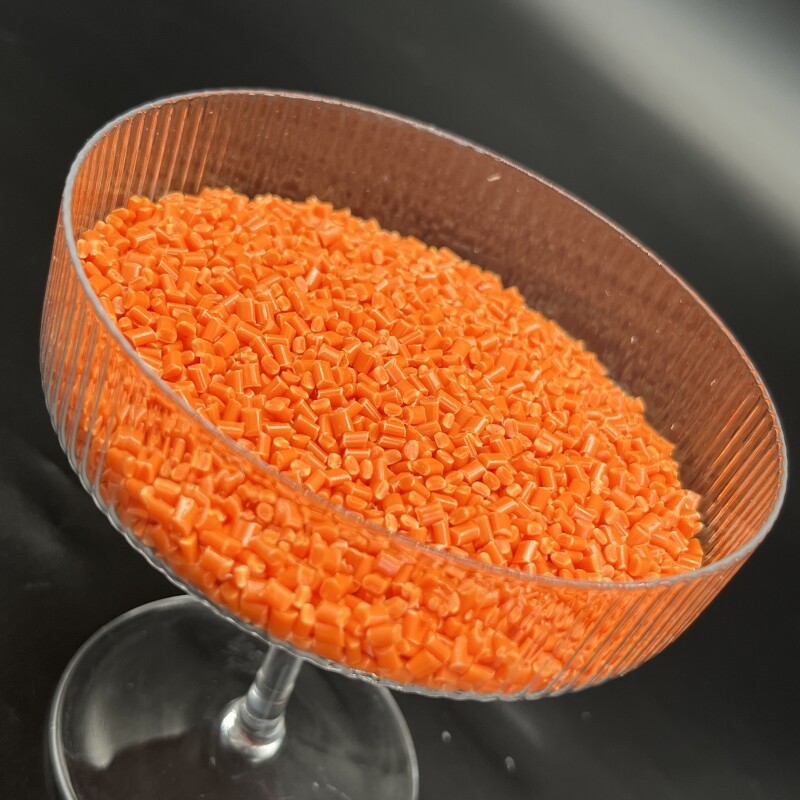Erreur de format d'e-mail
emailCannotEmpty
emailDoesExist
pwdLetterLimtTip
inconsistentPwd
pwdLetterLimtTip
inconsistentPwd

Offer Technical Support and Customized Solutions
The company is committed to creating new and improved plastic materials to meet the evolving demands of the market.

How to Produce Perfect ABS Parts: ABS Injection Molding Processing Introducing
Introduction:
Producing ABS parts with precision and efficiency is a crucial aspect of various industries, including manufacturing, automotive, and consumer goods. ABS (Acrylonitrile Butadiene Styrene) is a versatile thermoplastic material widely used due to its excellent impact resistance, strength, and dimensional stability. However, achieving optimal production outcomes requires careful considerations and adherence to certain techniques.
Drying of ABS plastic
ABS plastic has high moisture absorption and sensitivity to water, so it is important to thoroughly dry and preheat it before processing. This not only helps to eliminate surface defects such as blisters and silver streaks caused by water vapor but also facilitates plasticization of the plastic, reducing surface blemishes and swirl marks on the finished products. The moisture content of ABS raw materials should be controlled below 0.13%. The drying conditions before injection molding are as follows: drying at 75-80°C for 2-3 hours during dry winter season and drying at 80-90°C for 4-8 hours during summer rainy days. If the products need to achieve exceptional gloss or have complex structures, the drying time should be longer, up to 8-16 hours. The presence of trace amounts of water vapor often leads to surface haze defects in the finished products. It is recommended to convert the hopper of the machine into a hot air hopper dryer to prevent the ABS, which has been properly dried, from absorbing moisture again in the hopper. However, such hoppers should have strengthened humidity monitoring to prevent overheating of the materials when production is temporarily interrupted.
Injection temperature
The relationship between temperature and melt viscosity of ABS plastic is different from that of other amorphous plastics. When the temperature increases during the melting process, its melt viscosity actually decreases very little. However, once the plasticizing temperature is reached (the suitable processing temperature range, such as 220-250°C), continuing to blindly increase the temperature will cause thermal degradation of the relatively low heat-resistant ABS, resulting in an increase in melt viscosity and making injection molding more difficult, thereby reducing the mechanical properties of the molded parts. Therefore, although the injection temperature of ABS is higher than that of plastics like polystyrene, it cannot have a wide temperature range like the latter. In poorly temperature-controlled injection molding machines, yellow or brown carbonized particles are often found embedded in the molded parts after producing a certain quantity of ABS parts, and it is difficult to remove them by injecting new material into the empty cavity.
The reason for this is that ABS plastic contains butadiene, and when certain plastic particles firmly adhere to surfaces in the screw barrel that are not easy to flush at higher temperatures, long-term exposure to high temperatures leads to degradation and carbonization. Since operating at high temperatures may cause problems for ABS, it is necessary to limit the temperature of each section of the barrel. Of course, different types and compositions of ABS have different applicable temperature ranges. For plunger-type machines, the temperature should be maintained at 180-230°C, while for screw machines, the temperature should be maintained at 160-220°C. It is worth noting that due to the higher processing temperature of ABS, it is sensitive to changes in various process factors. Therefore, temperature control of the front end of the barrel and the nozzle is crucial. Practice has shown that any small changes in these two parts will be reflected in the molded parts. The greater the temperature variation, the more likely it will lead to defects such as weld lines, poor gloss, flash, sticking, and discoloration.
Injection pressure
The viscosity of melted ABS is higher than that of polystyrene or modified polystyrene, so a relatively high injection pressure is used during injection. However, not all ABS parts require high pressure. For small, simple-structured, and thick parts, a lower injection pressure can be used. The magnitude of pressure in the cavity at the moment of gate sealing during the injection process often determines the surface quality of the molded parts and the extent of silver streak defects. If the pressure is too low, the plastic will shrink a lot and have a greater chance of losing contact with the cavity surface, resulting in surface haze. If the pressure is too high, the friction between the plastic and the cavity surface will be strong, increasing the likelihood of sticking to the mold.
Injection speed
Medium injection speed is preferred for ABS materials. When the injection speed is too fast, the plastic is prone to scorching or decomposition, leading to defects such as weld lines, poor gloss, and localized plastic discoloration near the gate on the molded parts. However, when producing thin-walled and complex parts, it is still necessary to ensure a sufficiently high injection speed to ensure complete filling.
Mold temperature
The molding temperature of ABS is relatively high, so the mold temperature is also relatively high. Generally, the mold temperature is adjusted to 75-85°C. When producing parts with a large projected area, the mold temperature should be set at 70-80°C for the stationary side and 50-60°C for the moving side. For larger, complex-shaped, and thin-walled parts, it is necessary to consider special heating of the mold. In order to shorten the production cycle and maintain a relatively stable mold temperature, after the parts are taken out, methods such as cold water bath, hot water bath, or other mechanical shaping methods can be used to compensate for the time originally spent on solidification inside the cavity.
Material quantity control
When injecting ABS plastic using an injection molding machine, the injection quantity per shot is usually set at 75% of the standard injection quantity. In order to improve the quality and dimensional stability of the molded parts, as well as the uniformity of surface gloss and color tone, it is advisable to set the injection quantity at around 50% of the standard injection quantity.
Conclusion
As a manufacturer of modified plastic pellets, it is crucial for us to address ABS injection molding issues and ensure color consistency in our products. By doing so, we can establish and maintain strong relationships with our customers, who rely on our expertise and reliable solutions. Our commitment to ongoing research and development enables us to enhance the quality and consistency of our products, meeting the diverse needs and expectations of the dynamic plastic industry. Through our dedication to improvement, we strive to remain a trusted and preferred supplier in the market.
Related links:
https://www.toponew.com/products/abs-compound

